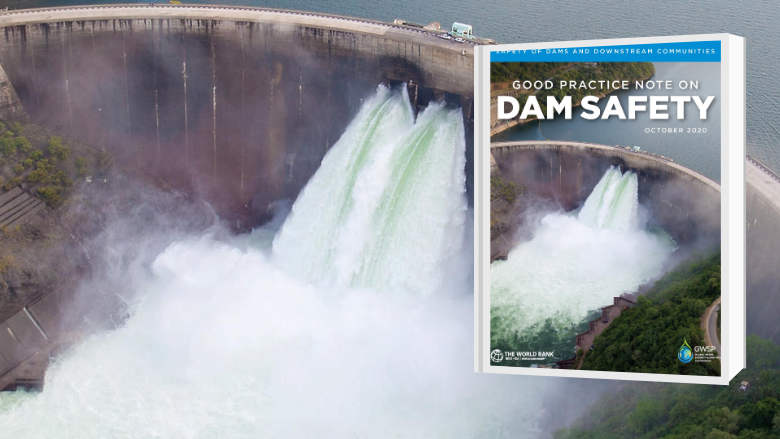The World Bank has a robust portfolio of projects involving dams for the provision of water supply, irrigation, hydropower, flood protection, and other services that enable green, inclusive and resilient development. Since 2003, with its re-engagement in large hydraulic infrastructure, the Bank has financed over $50 billion worth of investments that involve dams, including rehabilitation and upgrading of existing dams, construction of new facilities, and financing for preparatory studies for proposed dams. Given the social and economic dependence on these structures, dams must be maintained in good operating condition and reservoirs managed safely. In addition to protecting surrounding areas and downstream communities, dam safety management is critical in ensuring these long-lived investments can deliver their intended services for their anticipated lifespans and, in many cases, beyond.
The World Bank’s Environmental and Social Framework (ESF) contains specific provisions on dam safety, which are intended to address safety and security risks and the impacts on project-affected communities in a way that is consistent with the mitigation hierarchy that underpins the ESF. Through careful design, construction and operation and maintenance, World Bank borrowers can reduce the likelihood of events that can undermine the safety of a dam. These specific provisions on dam safety are found in Environmental and Social Standard 4 (ESS4): Community Health and Safety and its Annex 1 on Safety of Dams, which replace the provisions of Operational Policy (OP)/Bank Procedure (BP) 4.37: Safety of Dams for all projects under preparation since October 2018.
Three major modifications have been introduced under the provisions of ESS4 compared to OP/BP4.37. These include: (a) lowering the threshold for large dams with a reservoir capacity greater than 3 million cubic meters from 10 meters to 5 meters in height; (b) including all other dams, regardless of size or retention capacity (referred to as small dams) that could cause safety risks; and, (c) explicitly introducing a proportional risk management approach to the application of the dam safety requirements, considering a dam’s size, complexity, and potential risk.
To provide additional guidance on the application of these requirements under the ESF, the World Bank’s Water Practice has developed a Good Practice Note (GPN) on Dam Safety in coordination with OPCS, which equips Bank task teams and counterparts with a risk management approach to dam safety in the context of World Bank projects. This guidance is meant to enhance the quality of practice without creating new requirements for the application of the ESF and are, thus, complementary to the compliance requirements contained in the ESF and the Guidance Notes for Borrowers.
The Good Practice Note on Dam Safety includes sample frameworks for the main dam safety plans as well as sample terms of reference and useful examples and references. The Good Practice Note is also accompanied by seven Technical Notes that provide more detailed explanation and guidance on hydrological risk, geotechnical risk, seismic risk, small dam safety, potential failure modes analysis, portfolio risk assessment, and tailings storage facilities.
The Good Practice Note and accompanying materials are the products of the staff of the World Bank with external contributions. Any findings, interpretations, and conclusions derived from this model do not necessarily reflect the views of The World Bank, its Board of Executive Directors, or the governments they represent. These works are subject to copyright. Because the World Bank encourages dissemination of its knowledge, these tools are made available for public use as long as full attribution to the works are given.
